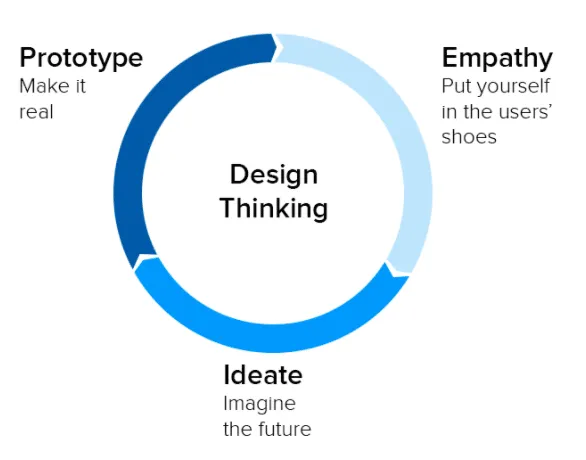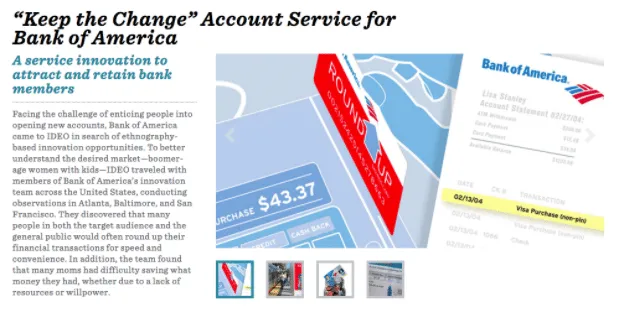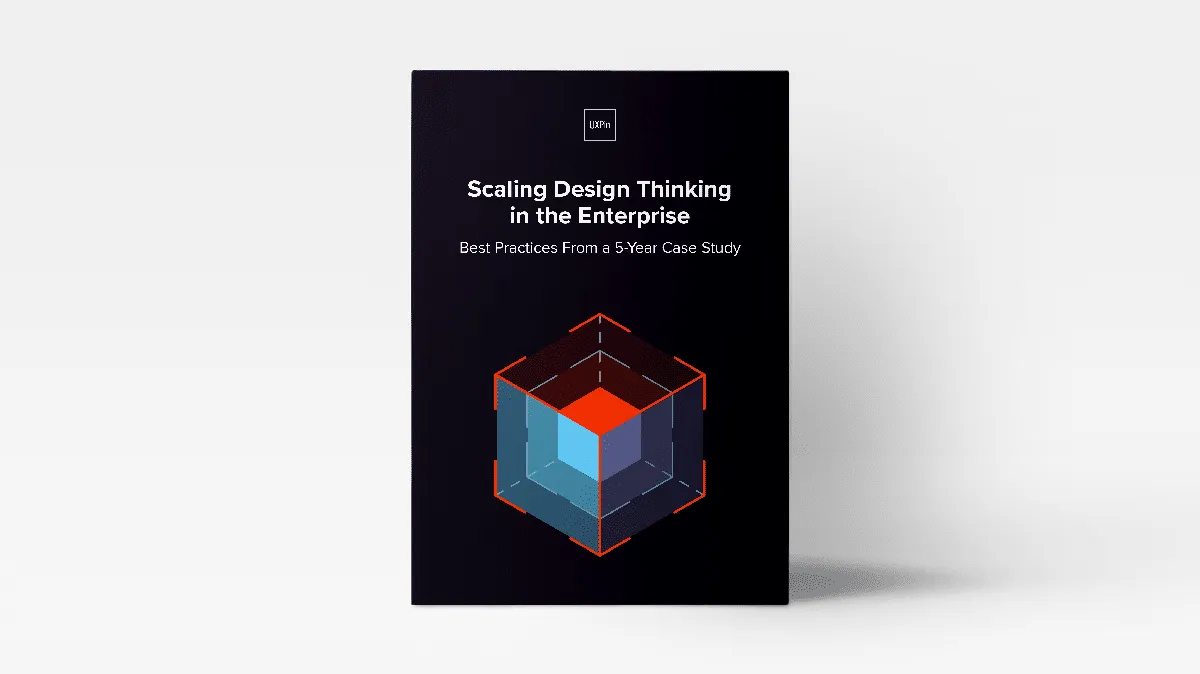While you practice design thinking every day, outsiders most likely see it as some form of magical thinking. At the very least, it’s certainly a buzzword.
To make others care about the practice behind the buzzword, you need to relate it back to the business and show some real examples of its value. Cut through the jargon and describe it as a business process.
First, I’ll explain how we boiled down design thinking into a 30-second value proposition, then I’ll explain some of my favorite case studies as evidence of its effectiveness.
Design Thinking in 30 Seconds
Design thinking might feel convoluted from over-usage, but it’s actually a very straightforward concept.
The core tenets are simply 1) focusing first on customer problems, 2) iterating on ideas, and 3) soliciting feedback to focus and refine those ideas.
At Citrix, we boiled down design thinking into key activities within the stages of Empathy, Ideate, and Prototype.

Here’s how we explained the value of design thinking:
“For people in non-design roles, focus easily drifts away from the customer. They might focus on a schedule or an internal process. Often, as companies scale, many employees have limited or no contact with the company’s customer.
Luckily, through structured activities, we can teach people to refocus on the problems that matter to customers and improve the bottom line.
Rather than latch onto the first solution, employees can better evaluate a multitude of options before committing resources. They’ll be able to better avoid the vicious cycle of incremental effort with minimal customer impact.
As employees evaluate and explore ideas earlier, we’ll waste less money on the wrong issues.”
And the elevator pitch version:
“Design thinking isn’t a philosophy. It’s a problem-solving strategy employees can learn to improve their business processes. With the right people teaching it, the company will see more profitable and innovative options appear when making decisions that can cost a lot of time and money.”
Design Thinking in Action
In many organizations, UX teams become facilitators and trainers of a design thinking movement. They help employees in other roles learn this new way of approaching problems.
But before you can lead design change, you need to:
- Know what you’re pitching and how it benefits the bottom line.
- Understand how design thinking fits into the current system and culture.
- Know where to find crucial points of influence that make or break your efforts—it’s very difficult to encourage shifts in process and perspective without a strong fan base.
To show how design thinking can transform products and services, we’ll look at a few examples. These stories will help you understand (1) how design thinking impacts the business in a variety of industries and (2) how to craft your change strategy from idea to results.
1. GE Healthcare
Innovation Architect Doug Deitz transformed the MRI experience for children by creating a new offering at GE Healthcare.

Photo credit: Slate
A designer of MRI instruments, he watched a family bring their child in for an MRI. Looking on as the child cried, Doug re-examined his device—but this time from the child’s perspective. Bending down on his knees, he saw the experience in a whole new way.
It was terrifying.
The child’s reaction drove him to reimagine the experience.
Doug worked with a cross-functional team of healthcare providers, patients, and GE designers to transform the MRI design, as well as the testing room, to create a child-centered world where the MRI became a canoe in a river. Not only did this reduce anxiety for the children and family, it saved the hospital medication costs since they sedated far fewer children.
2. Bank of America
Bank of America partnered with IDEO to help their customers save money. Traditionally, that means running a marketing campaign to encourage savings.

Photo credit: IDEO
Instead, based on consumer observations and interviews, IDEO designed Keep the Change—a program that led to the participation of 2.5 million existing customers and the opening of 700,000 new accounts.
Their program made it easy for customers to save money by rounding up purchases made on their debit cards to the nearest dollar and transferring the difference into the customer’s’ savings account from their checking account.
3. Intuit
At Intuit, a team applied design thinking to create the Fasal app to help Indian farmers get the best price for their produce.
Based on their observations and learnings from the farmers, they brainstormed solutions and then created a prototype app. Based on their SMS-based app pilot, they estimated that the new approach to sharing data about produce prices could net the farmers $250-$500 annually.
Within the first few months of launch, the app grew to 500,000 users who now earned more than 20% income. With a solid user base, Intuit can now monetize the app through third-party advertising.
Conclusion
With some examples to reference, now the real work starts.
To successfully implement design thinking across your own organization, you must first align with (or devise) a process for execution and collection of results. Next, you’ll need to quantify those results.
For more advice and case studies, download Scaling Design Thinking in the Enterprise. The free ebook is based on a 5-year project I helped lead at Citrix.



